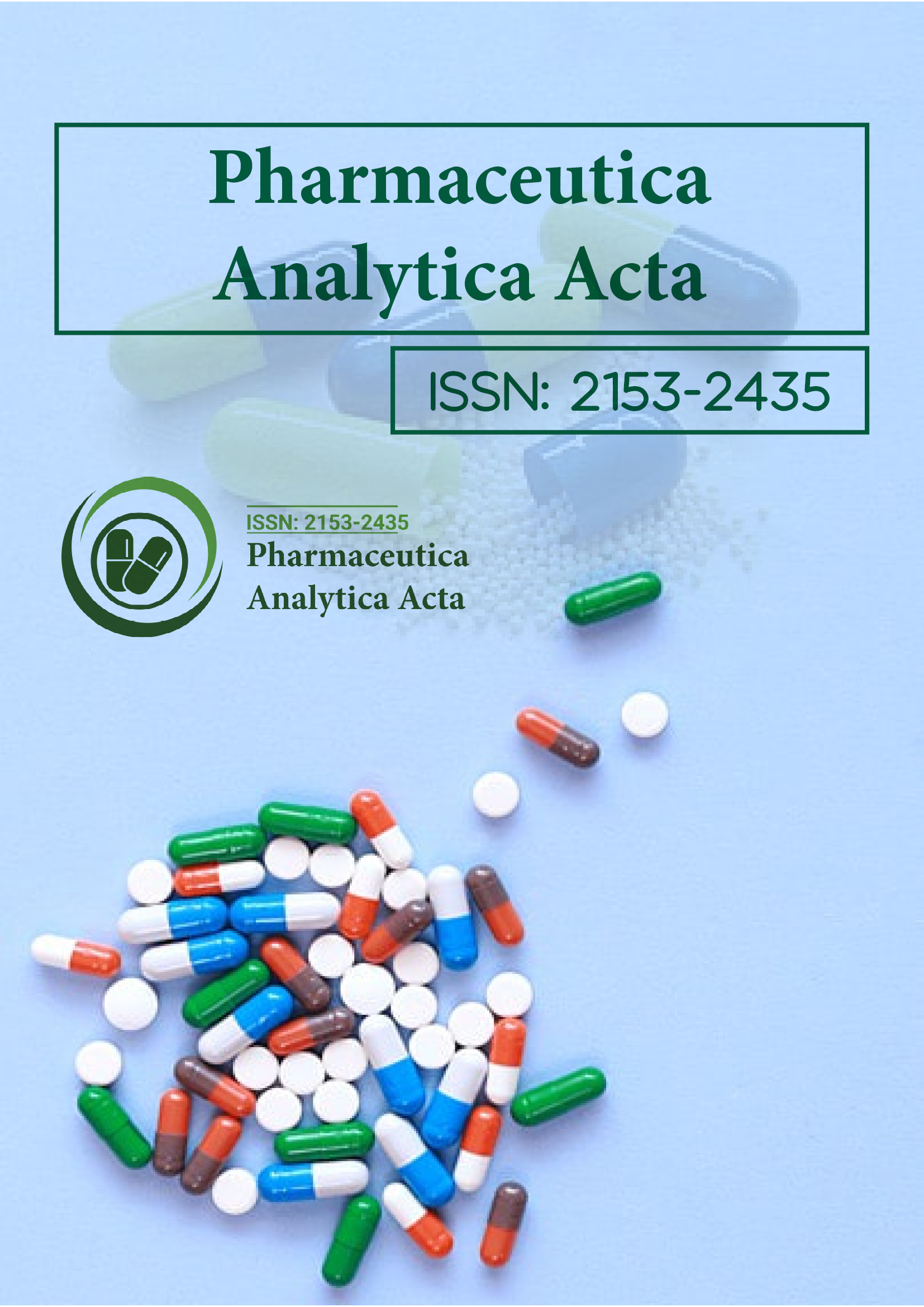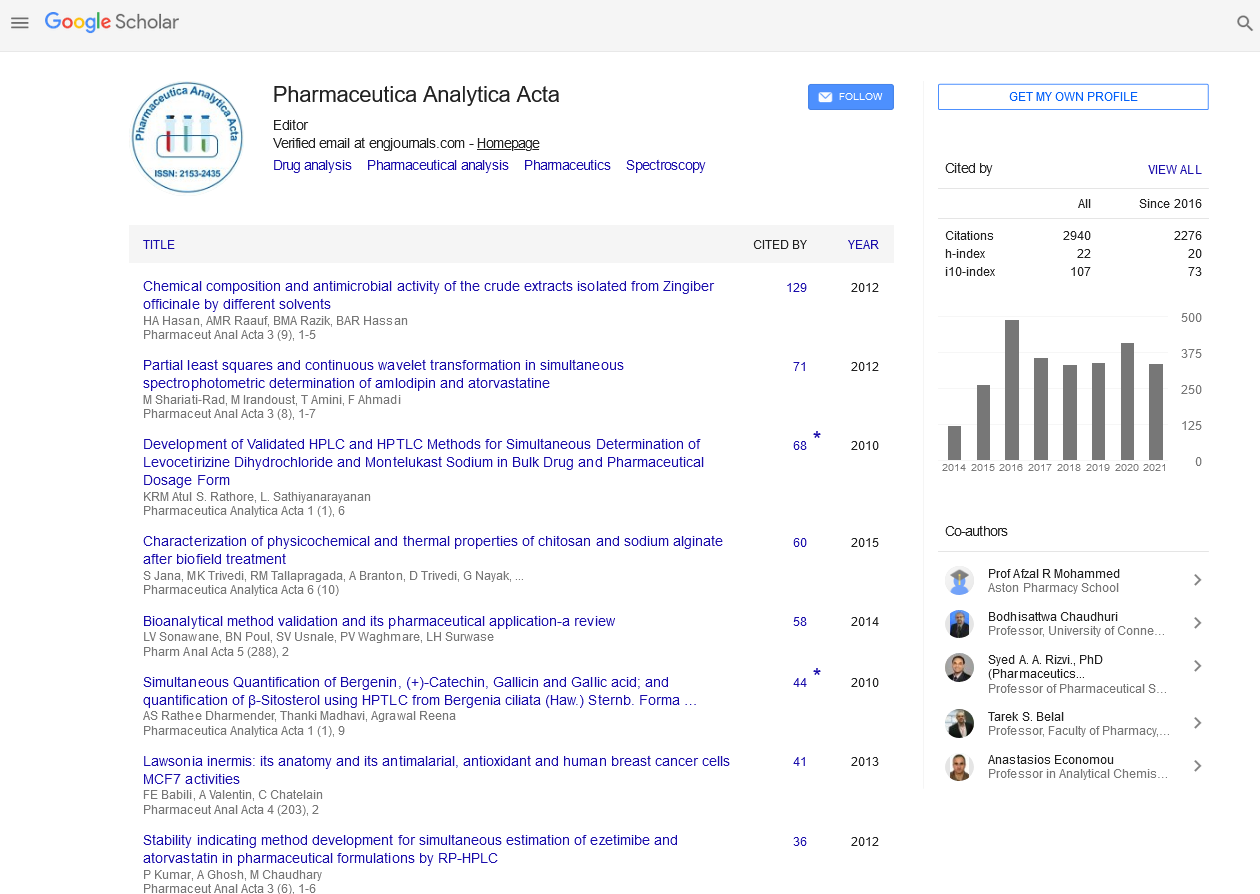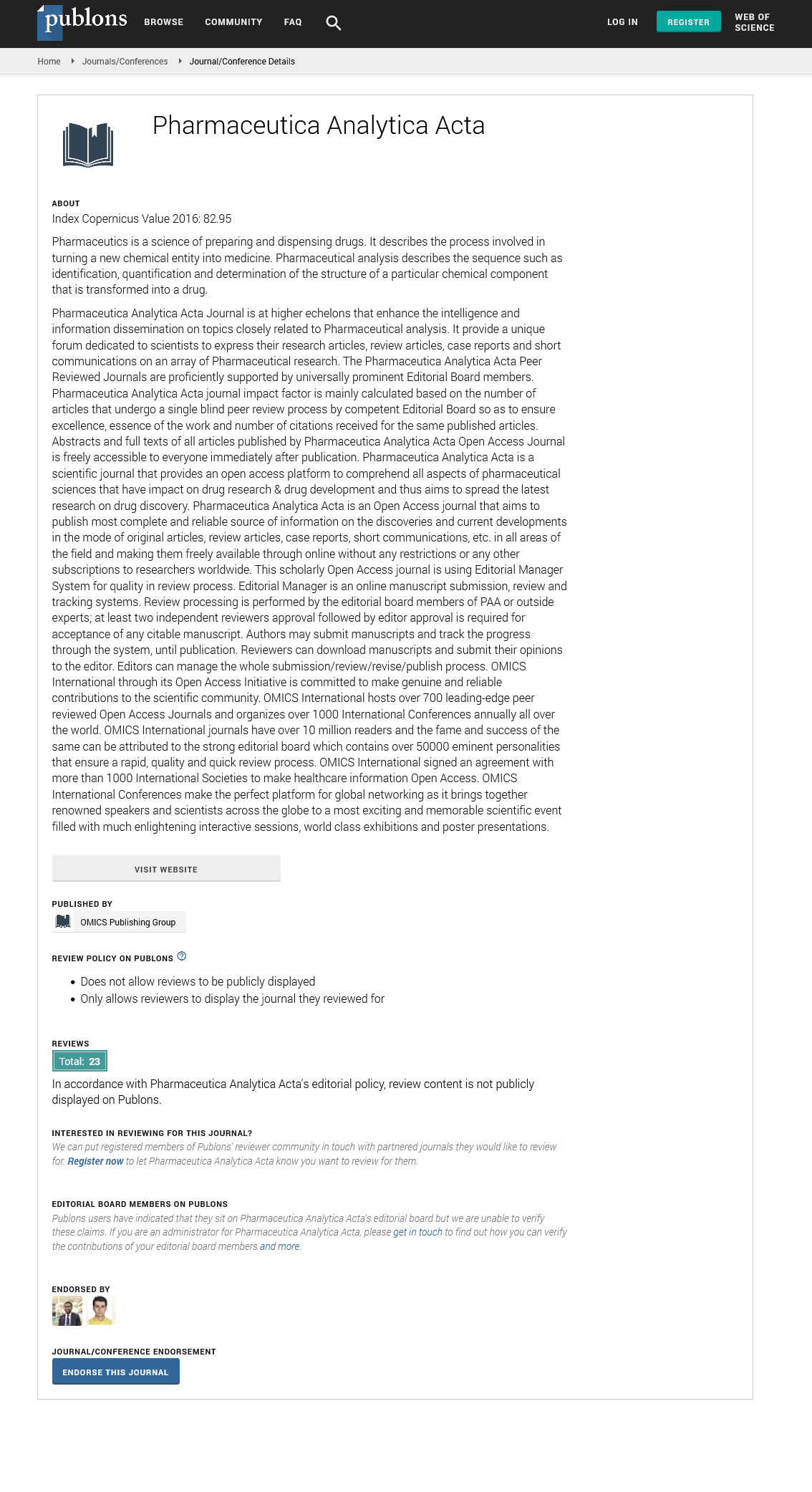Indexed In
- Open J Gate
- Genamics JournalSeek
- Academic Keys
- JournalTOCs
- The Global Impact Factor (GIF)
- China National Knowledge Infrastructure (CNKI)
- Ulrich's Periodicals Directory
- RefSeek
- Hamdard University
- EBSCO A-Z
- OCLC- WorldCat
- Publons
- Geneva Foundation for Medical Education and Research
- Euro Pub
- Google Scholar
Useful Links
Share This Page
Journal Flyer

Open Access Journals
- Agri and Aquaculture
- Biochemistry
- Bioinformatics & Systems Biology
- Business & Management
- Chemistry
- Clinical Sciences
- Engineering
- Food & Nutrition
- General Science
- Genetics & Molecular Biology
- Immunology & Microbiology
- Medical Sciences
- Neuroscience & Psychology
- Nursing & Health Care
- Pharmaceutical Sciences
Effect of cavitation intensity and lipid composition on physical properties of insulinloaded tripalmitin & palmitic acid nanostructured lipid crystals (NLC)
2nd World Congress on Bioavailability & Bioequivalence: Pharmaceutical R & D Summit-2011 and International Conference on Pharmaceutics & Novel Drug Delivery Systems
06-08 June 2011, Las Vegas, USA
L.M Thong, N.Billa, C. R. Roberts and J.C. Burley
Scientific Tracks Abstracts: PAA
Abstract:
Nanoformulation by multiple emulsion-evaporation (w/o/w) in solid lipid matrices can be achieved by means of ultrasonic cavitation. Th is two-step technique requiring a pre-emulsifi cation step followed by an evaporation step employs two acoustic phenomena; namely emulsifi cation and cavitation. Since the ultimate characteristics of the nanoparticles almost exclusively depend on the aforementioned two-steps, we investigated the infl uence of various acoustic phenomena and duration on the physical properties of the nanoparticles produced. We also report the infl uence of lipid composition on the properties of formed NLC. NLC were formulated by multiple emulsion-evaporation using insulin as model drug. Organic solvent (Cl 2 CH 2 ) was evaporated off in 2 hours at ambient temperature, by heat or by spraying. Characterization of the NLC was based on particle size analysis, SEM and DSC. Aptly, there was an inverse relationship between z-average of the NLC and amplitude of ultrasonication from 40% down 20%. Further reduction in z-average was observed when the primary emulsion was vortex-mixed prior to ultrasonication as compared to the same subjected to bath-ultrasonication. Solvent removal aft er emulsifi cation was most effi cient from the conical measure where NLC were fabricated compared to the use of heat or spray drying. As palmitic acid content is increased, the state of entropy (ΔS) of the NLC decreases in the direction of less ordered structure. Conversely, ΔS increases with increasing amount of tripalmitin, with a less disrupted or more crystalline network structure. A slight lowering of melting temperature was observed with increasing palmitic acid content. Very minor alteration in acoustic energy has a direct impact on properties of the NLC at both pre-emulsifi cation as well as evaporation stage. Th is highlights the need to consider re-optimisation of formulation parameters, even with the slightest change to formulation variables. Th ere is an indication that addition of chemically diff erent solid lipid favour increase in the state of disorder, similarly to mixtures of solids and liquid lipids. However, an increase in state of disorder in the present instance does not appear to equate increase in drug accommodation. Th erefore, it is likely that the state of disorder within chemically diff erent solid lipid composites does not necessarily favour drug accommodation, as opposed to composites comprised of solid and liquid lipid.


